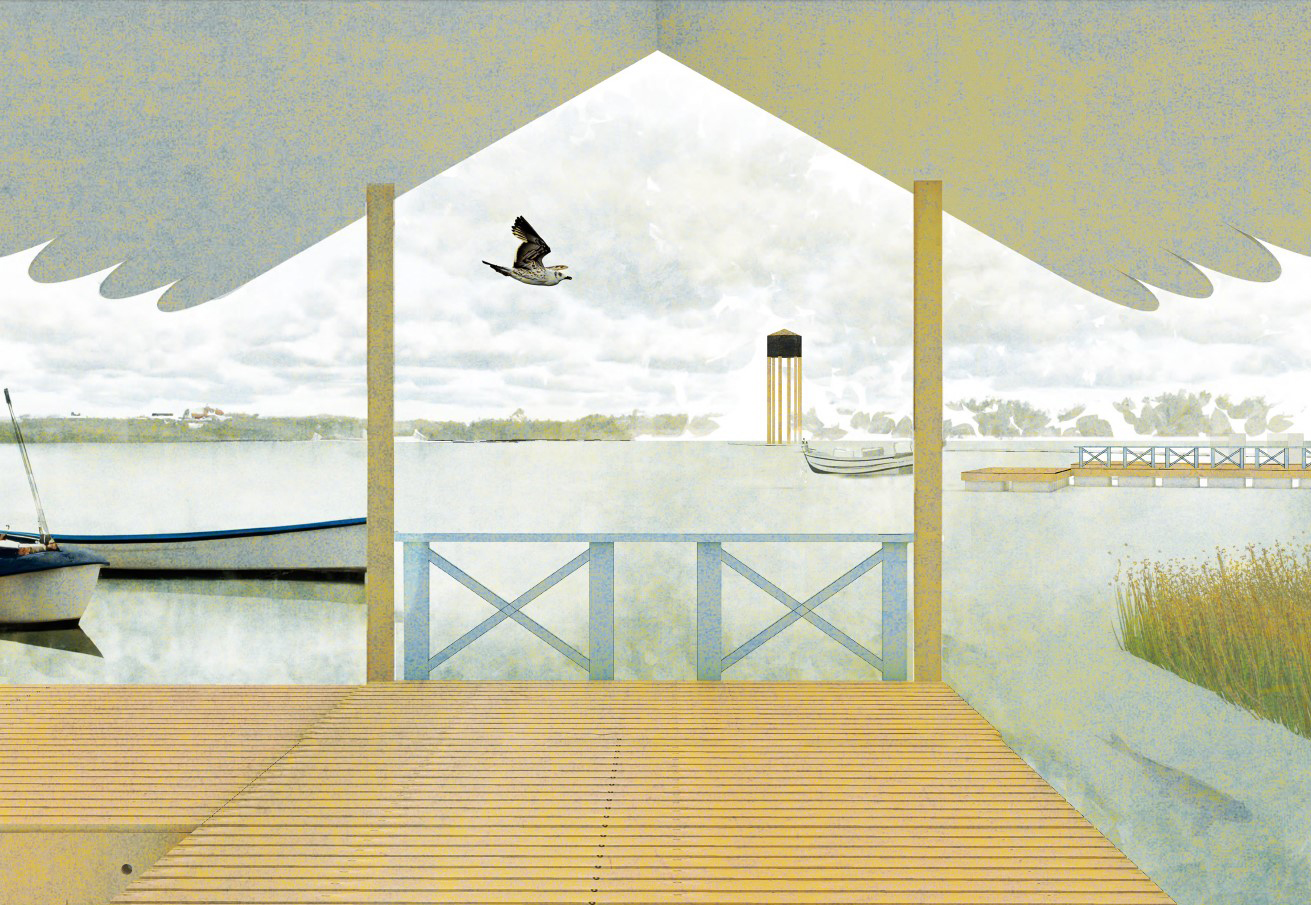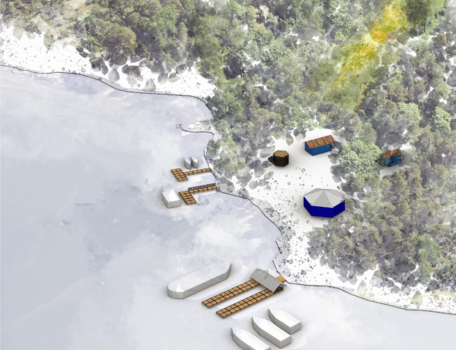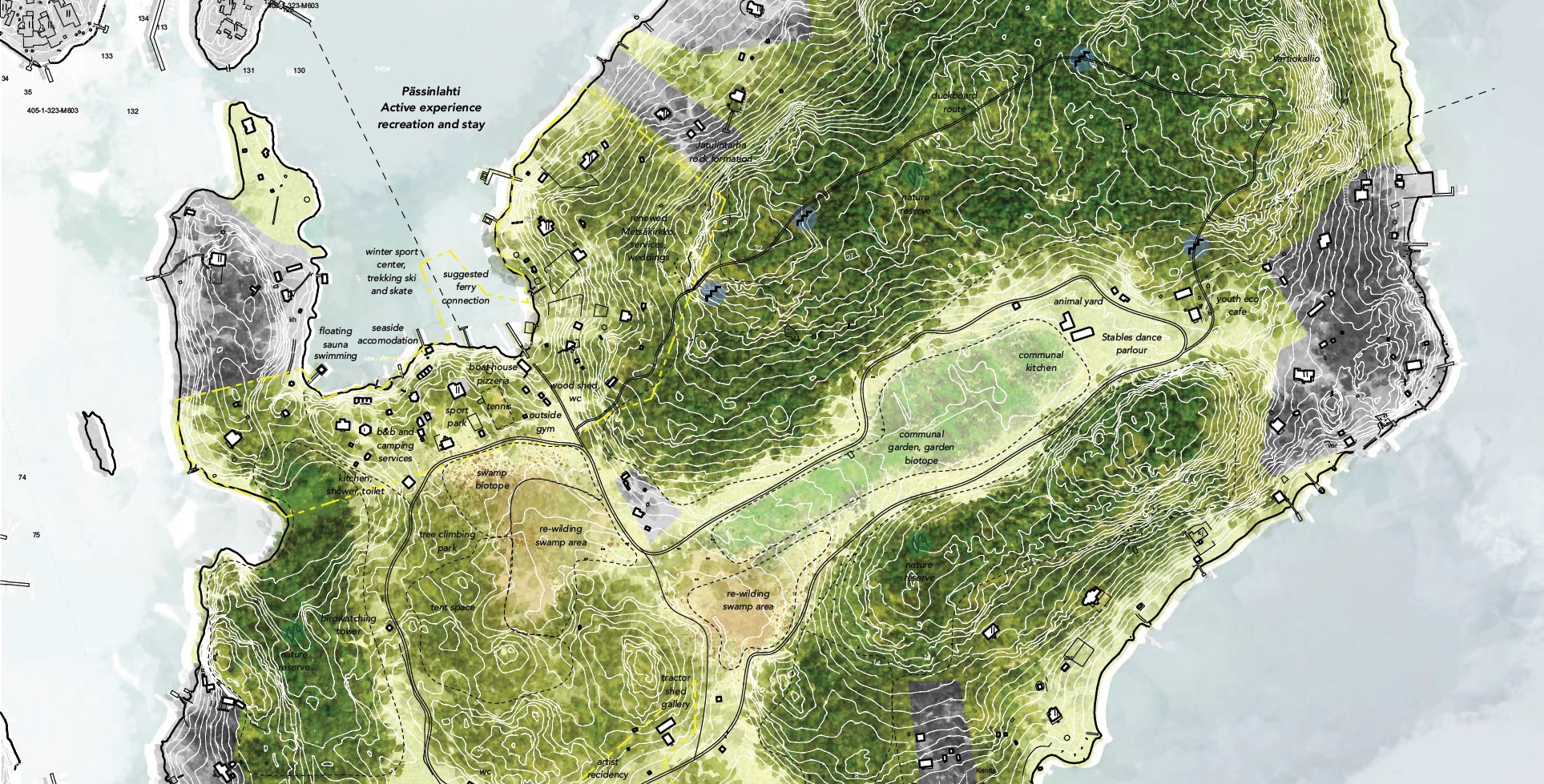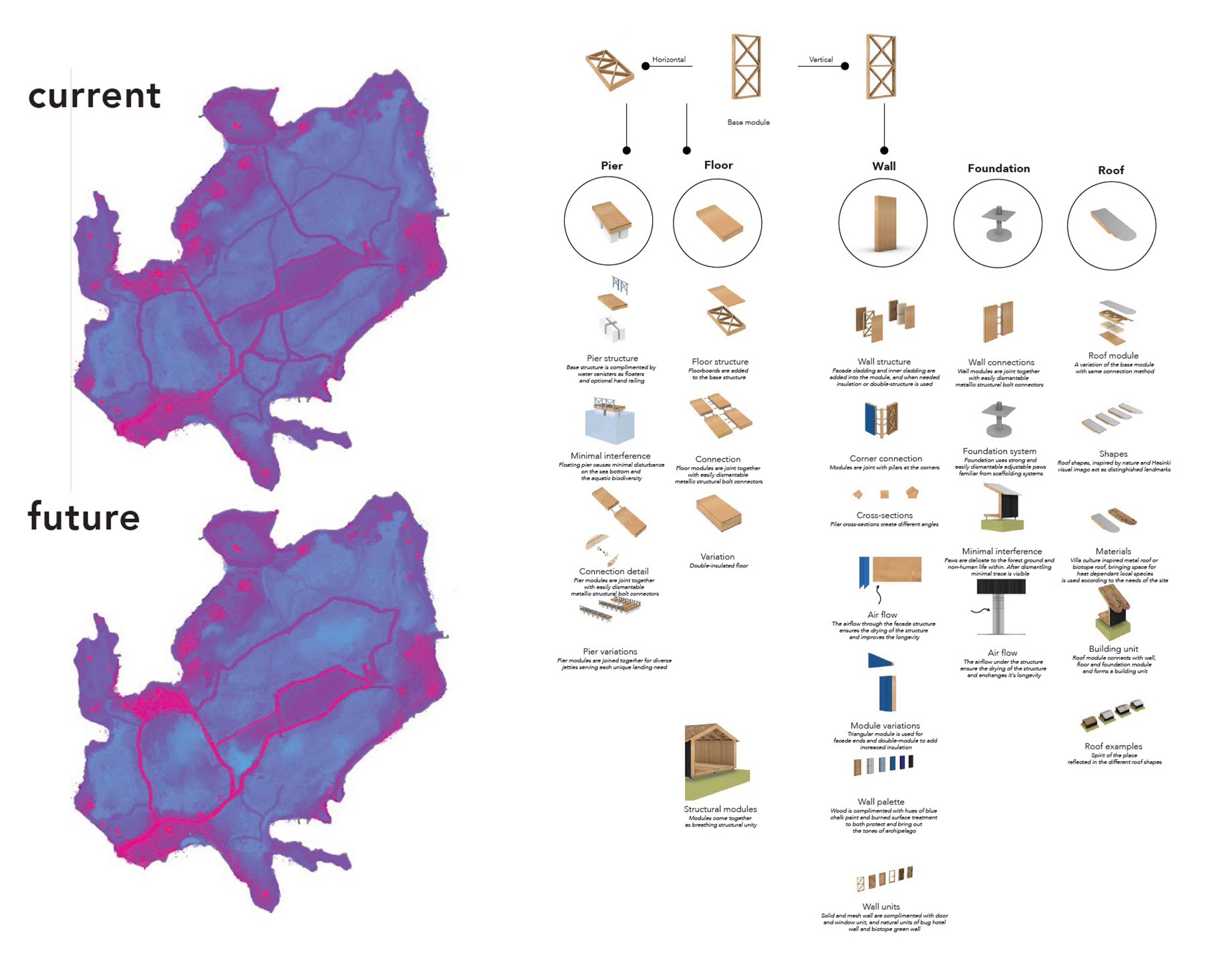Carnets d'Europan n°1
Ecological Bifurcations: Strong Idea

How to Create an Equality
Between Human & Non-Human
By Dimitri Szuter, PhD in architecture, teacher, founder of P.E.R.F.O.R.M.,
Paris (FR)
E17 Runner-up project in Helsinki (FI), HAVEN – for humans & non- humans alike
How to give a voice to the more-than-human species? This is the question that Studio Kantele, the runner up team in Helsinki (Europan 17) is raising as a “living city” answer to the archipelago site. Beyond design, Saara Kantele and Paul Bot are designing political tools to establish an “equality act” that could lead to the preservation and enhancement of the archipelago milieu for all the living entities.
Saara is an architect and designer, Paul is an artist with a background in ecology. They are from Finland and they care about the vulnerable archipelago. That personal attachment drove them to answer to the competition. Their goal: nurturing the nature of the islands and preserving it from intensive human activity. To do so, they are focusing on replacing humans where they belong : as one living entity among a big spectrum of species! They even go further in the reflection: they are considering “non-human” species, in four different categories, as biotopes of marine life, the archipelago fauna & flora, and the cultural species that humans have brought to the islands as equal “clients” as humans.

For them, it is beyond design! It’s an important paradigm shift that has to be embodied in many ways. The first act is political: they are reusing the modernist “zoning” tool to preserve certain areas off the kick of human intrusions. It’s radical and it’s conceptually reversing the modernist attitude - by reusing the terms but shifting the philosophy of it.
To mitigate this disused way of fragmenting land, they are designing different “gradiants” of superposition in between those zones, that explore how and what to share with other species. This ecotonal way of designing the thickness of “frontiers” allows them to imagine shared devices that give shape to better interactions between living entities.


Their strategy towards the implementation of this political idea is to generate collectives that could engage short and long term actions that would give life and body to the idea.

That project is valuable in all that sense because it is shifting the roles of designers - from demiurge actors to stage directors that impulse and not impose; because it is reducing the impact of our human establishment and generating a better balance between the species that inhabit the earth. These respectful and less-consuming ethics are steppingstones for the living city, to embody new paradigm shifts into our daily routines, to give hope for a desirable world.



